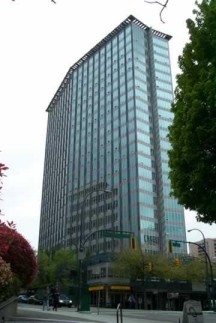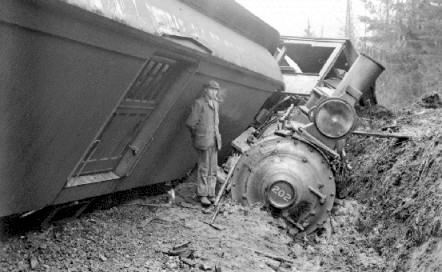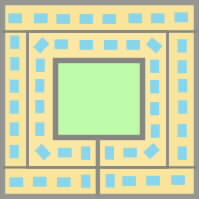|
This section will be a compilation of historic places unsuitable for a cache. Way points and photographs will be added to this page as they become available. |
|
|
|
|
There were two major train derailments in Burnaby around the turn of the 20th Century. Both wrecks were attributed to soft soils. Brunette River Train Wreck: N49 XX.XXX W122 XX.XXX On November 28th 1909 22 Japanese labourers were killed when a land slide caused a train to derail. It is still considered the worst rail disaster in Burnaby's history
Legend of the Sinking Train -- N49 15.720 W122 58.955 The Great Northern Railway was constructed through Burnaby from New Westminster after the Fraser River Railway bridge was completed in 1904. Although the route chosen along the north shore of Burnaby Lake offered good level grades, the peat bog at the western end of the lake and along Still Creek demanded the construction of a costly roadbed. A dangerous sinkhole appeared between Sperling Avenue and Douglas Road and the roadbed suddenly sank 15 feet, leaving train tracks underwater and forcing the railway to cancel passenger and freight service. A large work force then poured an average of 30 carloads of sand and gravel into the sinkhole daily. Nap Peltier, who claims to have been one of the members of this work crew, was interviewed by historian Bill Hastings in 1959. To date, no documents have been found to confirm his story: "We used to take a gravel train out on the track to the end and dump the gravel and go back for another load... One day we got to the work site close to noon so we did not dump the gravel and went to lunch. When we got back the train was not there. All we saw were the tracks going down into the muddy water with bubbles coming up... ...the whole thing sank out of sight. There
was a lot of trouble, but nobody did much about it except to spend a
great
deal of time fishing for it. We never did connect with it and
eventually
gave up. It must still be there." |
|
|
|
 TALLEST
RECORDED TREE IN BURNABY (cut down 1903) TALLEST
RECORDED TREE IN BURNABY (cut down 1903) N49 16.590 W122 58.223
A 280 foot tree was logged by L.T. Dundas in 1903. To put it in perspective, the tree was taller than the New Downtown Library complex and just 10 feet shorter than The Electra (B.C. Hydro Building) on Burrard Street. The stumpage from that tree and surrounding trees can still be seen in and around the Kensington Pitch and Putt park. |
|
|
|
|
Many structures were saved from demolition and shipped to Burnaby Village. The list below gives the original co-ordinates of the houses that are now inside the museum. Jesse
Love Farm House -- N49 13.821 W122 54.959
Irvine
House -- N49 XX.XXX W122 XX.XXX Seaforth School -- N49 15.902 W122 58.955 (There is now another school on the site) William
Holmes Homestead (1860) N49 XX.XXX W122 XX.XXX
OTHER HOMES William
& Ruth Baldwin House (1965) -- N49 14.033 W122 54.396
|
|
 cigarettes
were served directly to cars by uniformed car hops. Heating baby
bottles was an extra service.
cigarettes
were served directly to cars by uniformed car hops. Heating baby
bottles was an extra service. 





